Electrolux Induction - element size vs pot size!
Emily and Chiara
last year
Featured Answer
Sort by:Oldest
Comments (29)
kaseki
last yearlharpie
last yearRelated Discussions
Induction Cooktop: Burner & Pot Size Matching?
Comments (74)For searching out info in the future, it might help to know that "induction tabletop units" are often referred to as "portable induction cookers" which sometimes is abbreviated as "PIC." Now, on your questions about pans, are you looking for a way to heat several pans together on a single induction burner? If so, the caterer's serving pan idea won't work any better than it would if you used it over a small gas burner. Induction heating is not passed by magnetic contact between pans over a PIC --- well, only on such an infinitesimally small scale as to be of no perceptible use in cooking :>). Basically, the strength of induction fields falls off so rapidly that it has no heating effect on pans more than a fraction of an inch above the burner surface. For the same reason, stacking pans won't work either. Further complicating things for you, your PIC may claim to be a 9-10" unit, but the actual induction field on them is only 3.5" to 6" (depending on brand.) Beyond that small field, you have to rely on your pan's mass and conductive abilities to spread and transmit the heat widely. A stainless steel caterer's serving pan is just too thin to function that way. IOW, it won't work like an induction adapter disk (which basically converts the induction heating into a radiant electric surface.) In theory, something thicker might work as an adapter, such as one of Chef King's rectangular, 14" x 23" carbon steel stovetop griddles (about $70 last time I checked). My experience with this kind of thing has been that these can heat other pans but so slowly that they work better on PICs as warming trays rather than for bringing other pots to heat. Frankly, it might be easier to heat up each pan separately on the PIC, then put on the caterer's pan with hot water, and use the PIC to heat the water that will keep the pans warm. If there is a second electrical circuit, you also might consider buying a second PIC. IIRC, there are some Duxtop units which have pretty good reviews and now are priced in the same neighborhood as the Chef King griddle that I mentioned above....See MoreWhat Size Pots/Pans fit Max Burton Portable Induction Unit?
Comments (19)Definitely need to stir porridges with MB units. Ran an experiment this morning with cooking oatmeal in a small, 1 qt saucepan (5" diameter magnetic base). The MB had trouble with low heat settings with the small saucepan. At a "2" setting, the small pan would intermittently boil furiously in a torodial pattern and then shut down, boil, shut down, etc. A "3" setting was manageable with frequent stirring. With the previous experiment with the 2 qt sauce pan, the small bubbles started out in a ring shaped band, but quickly spread across the whole bottom and gave an very even boiling. Did not think to look with smaller pan this am, but note the cooking description above. I agree that overnight in a crockpot is much the better way to cook steel cut oats. I was only experimenting because of amck's posting. I use my MB for pretty much the same reasons you do and for "cooking stations" at some large parties. Sounds like Tuesday Morning could be a good deal. We used to have one in the nearest big town (actually, our state's largest city), but they pulled out a year ago. Apparently, our market area was deemed too small for the turnover they wanted....See MoreInduction - More poser settings or larger elements?
Comments (23)Let me try to put you mind at rest on cookware. On flaking of enamel from enameled cast-iron, you'll need to check on specific brands. I recall (but cannot find) a chowhound discussion of this last winter. The gist of it (IIRC) was that the less expensive brands were more likely to experience enamel flaking and the most typical offenders were Martha Stewart, Mario Batali and Rachel Ray brands. You will find some reports on Tramontina and Lodge pots, but most folks seem happy with them. The Tramontina 6 qt. dutch oven model was running about $50 at Wall Mart. The most recent Cook's Illustrated magazine (May-June 2013) says it performs nearly as well as brands costing five times as much (e.g., Le Creuset and Staub). There is also Lodge's own line of enameled cast iron dutch ovens which cost more than the Tramontina line but are still less than half the cost of Le Crueset and Staub. A friend of mine bought one of the "Kirkland" enameled dutch ovens from our local Costco for (I think) about $80 last winter. I do not know if that pan is made by Tramontina or Lodge, but it seems to be work very well and has not flaked on the interior. (She's using it on an old coil burner stove, btw.) So, plenty of alternatives to LC. On non-stick: the stuff is inert when it flakes. Internet research will turn up a lot of paranoid (and mostly fact-free) raving about non-stick just as there is with induction, itself. Did you know, for example, that induction cooks food in half the time of other stoves because it works like a microwave but does not contain the "low frequency radiation" which makes induction dangerous to your health, and that it may send current into your body if you use a metal spoon? That must be true because somebody posted this on the 'net! :>) To be sure, there are some real problems with NS coatings, even though poisonous/toxic flaking is not one of them. The actual problems with non-stick coatings are: (a) the chemicals used during the manufacturing process can be hazardous to the factory workers (e.g., toxic and/or carcinogenic). Those chemicals do not get passed on to the consumers who buy the finished products, but the potential risks for the workers may make your conscience uneasy about buying NS products. (b) getting a NS pan too hot (as in over 650F) will cause the coating to decompose and the resulting fumes reportedly can cause "flu-like" symptoms in people, Those fumes can be toxic to birds (but then, so can the fumes from a self-cleaning oven.. Considering that 650F is hotter than the melting point of lead, and that temps over 500F will generally degrade the slipperiness of teflon (i.e., diminish or ruin the non-stick-ability), and that that most of us would sear meat at around 450F (and wouldn't use non-stick pans for that purpose, anyway), and that most cooking oils have smoke points in the range of 350F to 400F, you can safely use NS by simply recognizing the limits and respecting them, if you like NS pans. The problem with NS on induction comes from failing to recognize how quickly induction brings a pan to heat. This will be especially problematic for those in the habit of cranking a burner to maximum, walking away for several minutes, then adding oil or whatever, and then reducing the heat. Do that with induction and you can have your empty NS pan at the melting point of lead before you know it. Heck, do that with a cast iron pan and the too-rapid rise in heat may crack the pan; there was a thread here discussing this point last summer. Get a cast iron pan to 600F and your are burning off the seasoning, as well. So, just set the NS pan to the temp you want to use, it will be at temp pdq, and you will be fine using it. As for stainless steel and ease of cleaning, that depends somewhat on the pan construction and on technique. Something thin and light is apt heat unevenly and burn food just as it would on any other stove. A more substantial pan will heat more evenly and be less likely to burn. The trick is usually said to be to get the pan hot, then add oil, and wait for ripples to appear (or wisps of vapor from the oil) before starting to cook. When you are done, you can put that SS pan in the dishwasher. For what is not cleaned it completely, a quick scrub with a sponge and some Barkeeper's Friend will easily and quickly polish it back up. Costco also has a number of decent induction capable cookware sets for less than $200. The selection seems to vary from season to seaon. Last year, I bought a 7 pot set of Circulon "Premier Professional" for $179. (2 sauce pans, a 6 quart stock pot, 3 fry pans (8" to 12") and a 3.5 qt. saute pan, plus lids.) They have anodized aluminum bodies with magnetic bases and non-stick interiors. The pans have worked very well for me on both induction and gas burners. I think there is a comparable "Kirkland" set on sale at Costco, now.) This post was edited by JWVideo on Sun, Jun 2, 13 at 14:50...See MoreBosch gas slide-in vs. Electrolux induction freestanding
Comments (7)On the point of durability/reliability as a factor: Athough this is good point to consider, I'm not sure how much we can really say about the Bosch slide-in gas range being or not being more long lived than the freestanding Electrolux induction, nor how much longer lived it might be. The hope is that a gas range without much in the way of electronics for the burners will have less to fail and therefore last longer. Still, the big uncertainty is the result of of the prevalence of electronic control systems in all kinds of major brand ranges. All seem prone to some early failure and to reflect susceptibility to issues with high-heat self cleaning cycles. I have to say, that a lot of the discussion that I've seen here about longevity of gas versus induction has been about gas ranges that are premium-priced pro-style ranges and re-conditioned vintage ranges rather than major brand gas stoves. I sometimes see citations to statistics garnered and reported by the National Assocation of Home Builders and Consumer Reports which were indicating 11 year lives for electric ranges and 13 year lives for gas ranges. Turned out, though, that those statistics were about replacement rates rather than appliance life expectancies. Plenty of folks remodel and replace functional ranges for something they regard (or hope) will be better. On the comments, "I can get a slide-in model that I like and I prefer the appearance over a freestanding" and "There is no slide in induction range that I like not to mention the price differential." Choosing any stove is inevitably choosing a mix of compromises of design, engineering, and budget. Induction burners are just one of numbers of factors to consider. How you weight that factor along with all the other considerations may be different than how I or most others else here might weight our own preferences, priorities and/or prejudices when choosing a stove. My own aesthetic preferences run to old-fashioned appliance white with a tolerance for stainless steel and general distaste for black casings. Yours are the opposite. My preferences are not "better." They are just what I prefer. So, I say, have confidence in your own priorities and your own budget. When you are paying as much for a stove as these cost, aesthetics are a valid consideration. Re the comment: "Even more burner/hob control than gas - seems like it would be better at lower heat levels such as simmering." Another set of tradeoffs rather than clear choices of one being intrinsically better than another. I'm not sure that that there is necessarily better low heat "control" with the Elux freestanding. There might be, might not be for you. Depends on what and how you cook, what you cook with, and what your preferences are. While the Elux burners have more low-end stepping than on most induction ranges, the settings are still digitally stepped. The Bosch burners have "analog" adjustments which are theoretically infinite. Do we really need infinite adjustability? Some of us want it. Others of us find there are enough steps in digital controls for what and how they cook. There are a number of OTOH tradeoffs beyond this. With a pan that is matched with burner size, an electric burner will deliver heat more evenly spread across the base of a pan. Spread is one thing. Steadiness is another. Depending on how the power cycling works, the heat may or may not be steady. With induction burners, you will have a small circle in the center of the toroidal induction field which is outside the field and where you depend on the pan construction to spread the heat. On the induction burners on most ranges, including the Elux you are considering, heat cycling is very even and steady, so you won't see power cycling in pan liquids. (Not so much applicable to some Whirlpool ranges and cooktops which reportedly have cruder power cycling rather like that on many portable induction cookers). With the Bosch gas burners being capped rings, you also get a toroidal effect in heat delivery and it can be more pronounced than with induction at very low heat levels. Again, a pan's construction may spread the low heat sufficiently evenly to the edges and to the center. Otherwise, when you put a pan on a small gas burner and turn the heat way down, you may find the low flame concentrates the heat towards a small area in around center. No big deal for simmering liquids but maybe a problem with things like delicate thickened sauces or chocolate where having the flame concentrated towards the center. Depending on your pan's construction and how you want the heat controlled, you might or might-not find yourself wanting a flame tamer plate. Another OTOH is that the Elux digital control make it very easy to exactly repeat heat levels when you figure out the ones you want to use. With gas, you have to eyeball it every time. At least I do with the gas that gets delivered in my town. (We are near production fields but get last choice, so the quality varies.) This is why I prefer my induction burner for my pressure cookers. Are any of these big problems? Maybe. Maybe not. They seem to have been concerns for some posters here. The concerns might or might not matter for your own cooking and interests....See MoreLaurel C
last yearEmily and Chiara
last yearlharpie
last yearlast modified: last yearwdccruise
last yearLaurel C
last yearEmily and Chiara
last yearkaseki
last yearLaurel C
last yearEmily and Chiara
last yearlharpie
last yearEmily and Chiara
last yearEmily and Chiara
last yearEmily and Chiara
last yearHU-16168550092
last yearEmily and Chiara
last yearHU-24328197
9 months agoEmily and Chiara
9 months agoHU-24328197
9 months agowdccruise
9 months agoHU-24328197
9 months agoHU-24328197
9 months agowdccruise
9 months agoEmily and Chiara
9 months agolast modified: 9 months agoHU-24328197
9 months agopalazzoguy
3 months ago
Related Stories
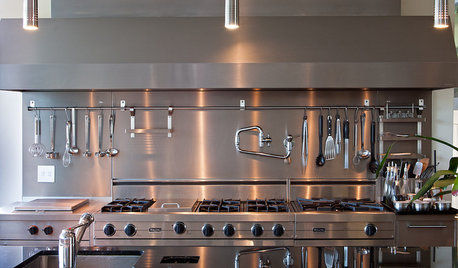
KITCHEN DESIGN10 Elements of Today's State-of-the-Art Kitchens
New technology, smart kitchen layouts and the hottest new appliances will make you feel like a Top Chef
Full Story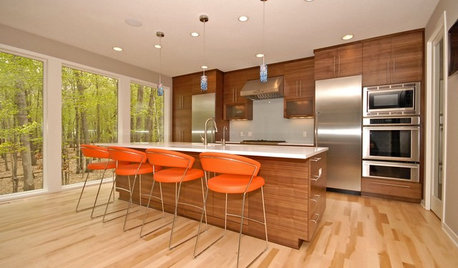
ENTERTAINING8 Elements of the Perfect Party Island
Turn your kitchen island into entertaining central with these 8 great features
Full Story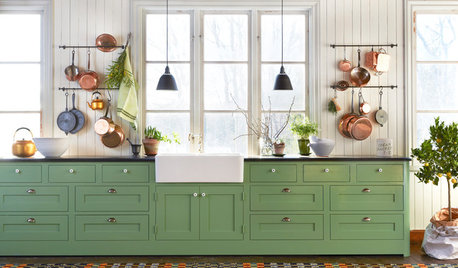
KITCHEN STORAGE7 Reasons to Hang Your Pots and Pans on a Rail
Well-placed utility rails are popping up in stylish kitchens. Here’s why you may want to consider one too
Full Story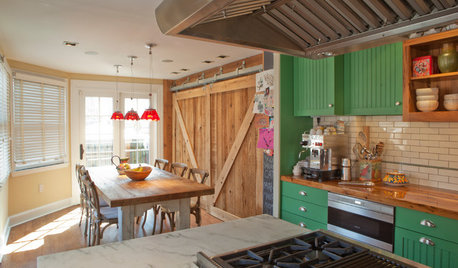
TASTEMAKERSPro Chefs Dish on Kitchens: How Marc Vetri Cooks at Home
Learn an Iron Chef's kitchen preferences on everything from flooring to ceiling lights — and the one element he didn't even think about
Full Story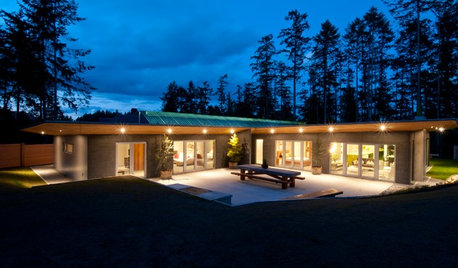
GREEN BUILDINGHouzz Tour: See a Concrete House With a $0 Energy Bill
Passive House principles and universal design elements result in a home that’ll work efficiently for the long haul
Full Story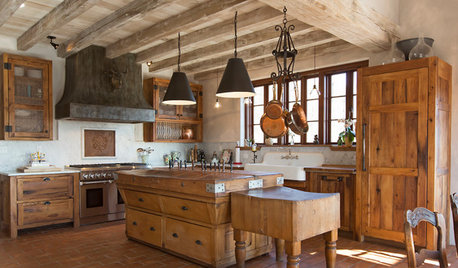
KITCHEN DESIGN15 Unforgettable Kitchen Ideas
Want to create a memorable space? Consider one — or all — of these design elements
Full Story
KITCHEN MAKEOVERSKitchen of the Week: Airy Beach Style in a Lake House
A designer creates a cottage feel by adding classic architectural elements and mixing white with warm woods
Full Story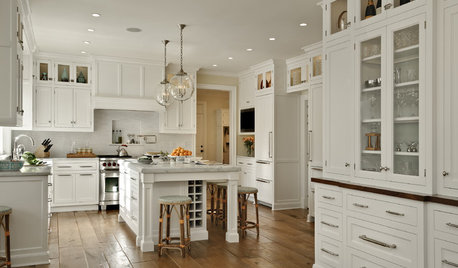
KITCHEN DESIGNDream Spaces: 12 Beautiful White Kitchens
Snowy cabinets and walls speak to a certain elegance, while marble counters whisper of luxury
Full Story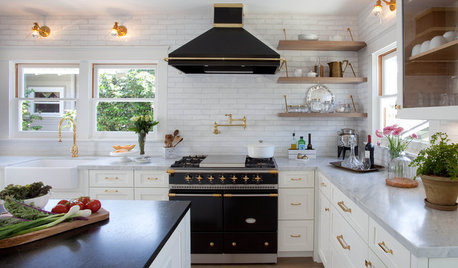
KITCHEN DESIGN5 Premium Kitchen Features One Designer Recommends
From pro-style ranges to discreet charging stations, these luxury upgrades can take a space to the next level
Full Story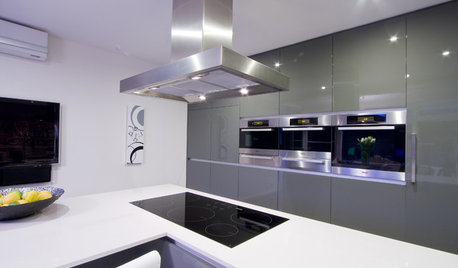
KITCHEN APPLIANCESFind the Right Cooktop for Your Kitchen
For a kitchen setup with sizzle, deciding between gas and electric is only the first hurdle. This guide can help
Full StorySponsored
More Discussions




Emily and ChiaraOriginal Author